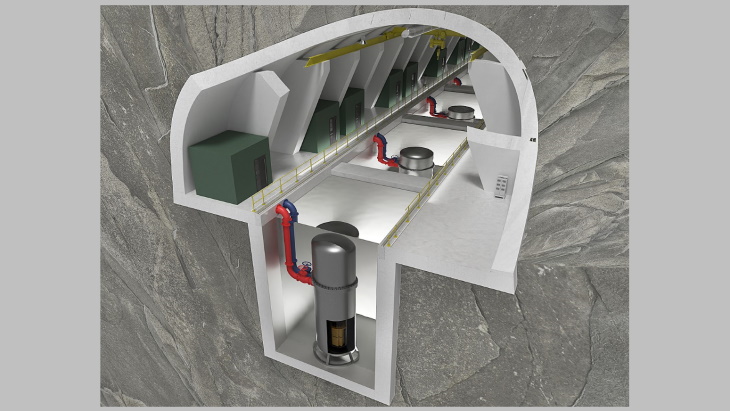
The pilot plant will serve as a full-scale, operational model of the Finnish-designed small modular reactor (SMR). Unlike the actual power plant, the pilot unit will use an electric element to produce heat inside the reactor capsule instead of nuclear fuel. The main purpose is to test operational features and to establish the necessary supply chains with various manufacturers to construct actual plants.
The pilot investment is estimated to be about EUR15–20 million (USD16–22 million). Steady Energy said final evaluations of potential sites are under way, with a decision expected by the end of summer. Following this, detailed planning and tendering for construction will commence. After the testing phase, the facility will be used for training and research purposes.
Currently, the proposed locations for the pilot plant include: Salmisaari caves in central Helsinki; Huuhanmäki caves in Kuopio, the regional capital of North Savo in eastern Finland; and the power plant sites at Kymijärvi and Teivaanmäki in Lahti, a regional capital in southern Finland.
Steady Energy - which was spun out in May 2023 from the VTT Technical Research Centre of Finland - expects the construction of the first operational LDR-50 district heating plant to begin by 2028, with the first unit expected to be operational by 2030.
Last December, the company signed a letter of intent with municipal energy company Kuopion Energia in Eastern Finland that includes an option for the construction of up to five district heating reactors starting in 2030. That agreement followed a letter of intent signed in October between Steady Energy and Helsinki's energy company Helen for the construction of up to 10 SMRs for district heating.
In Finland, more than half of the energy used for heating comes from district heating, which is mostly produced with fossil fuels, peat and biomass. Utilities are seeking ways to swiftly transit away from combustion-based heat production to new and innovative low emission alternatives such as SMRs.
Steady Energy noted that a "significant milestone towards emission-free heating" was achieved in February 2024 when the Finnish Radiation and Nuclear Safety Authority removed the distance-based safety zones for new nuclear plants. This change allows SMRs to be located near residential areas.
"Given that district heating plants need to be situated close to urban areas, current city centres often house large coal, peat, gas and oil power plants," the company said. "Replacing these with container-sized small nuclear units will free up valuable land for residents in the heart of cities."
"While Finland has made great progress in green electricity production, we still heat our cities with fossil fuels and biomass," said Steady Energy CEO Tommi Nyman. "Heating a large city can require a log pile the size of a football field each day. Replacing this with a small, emission-free nuclear power plant that can be installed underground will eliminate the endless lines of fuel trucks and radically reduce local air pollution."
The LDR-50 district heating SMR - with a thermal output of 50 MW - has been under development at VTT since 2020. Designed to operate at around 150°C and below 10 bar (145 psi), Steady Energy says its "operating conditions are less demanding compared with those of traditional reactors, simplifying the technical solutions needed to meet the high safety standards of the nuclear industry". It noted that its reactors are affordable enough for municipal utilities to invest in independently.
The LDR-50 reactor module is made of two nested pressure vessels, with their intermediate space partially filled with water. When heat removal through the primary heat exchangers is compromised, water in the intermediate space begins to boil, forming an efficient passive heat transfer route into the reactor pool, the company said. The system does not rely on electricity or any mechanical moving parts, which could fail and prevent the cooling function.